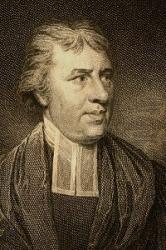Planning worship?
Check out our sister site, ZeteoSearch.org,
for 20+ additional resources related to your search.
- |
User Links
Search Results
Cease here longer to detain me
Author: R. Cecil Appears in 26 hymnals
Cease here longer to detain me
Cease here longer to detain me
Hymnal: A Collection of Psalms and Hymns #A18 (1884) Languages: English
Cease here longer to detain me
Cease here longer to detain me
Hymnal: Plymouth Collection #a1175 (1863)
Cease here longer to detain me
Cease here longer to detain me
Author: R. Cecil Hymnal: Appendix to Mennonite Hymn Book #d9 (1878) Languages: English
Cease here longer to detain me
John E. Gould

1821 - 1875 Person Name: J. E. Gould Composer of "HILL" in Songs of Gladness for the Sabbath School John Edgar Gould USA 1821-1875. Born in Bangor, ME, he became a musician. He managed music stores in New York City and Philadelphia, PA., the latter with composer partner, William Fischer. He married Josephine Louisa Barrows, and they had seven children: Blanche, Marie, Ida, John, Josephine, Josephine, and Augusta. He compiled eight religious songbooks from 1846 thru 1869. He died while traveling in Algiers, Africa, and was buried in Philadelphia, PA.
John Perry
John E. Gould
R. Cecil

1748 - 1810 Author of "Cease here longer to detain me" Cecil, Richard, M.A., born in London, Nov. 8, 1748, and educated at Queen's Coll., Oxford. Ordained deacon in 1776, and priest in 1777. He became the Vicar of two churches near Lewes shortly after; chaplain of St. John's Chapel, Bedford Row, London, 1780; and Vicar of Chobham and Bisley, 1800. He died in 1810. His poem:—
Cease here longer to detain me. Desiring Heaven. In 9 stanzas of 4 lines, is supposed to be addressed by a dying infant to his mother. It was written for his wife on the death of a child “only one month old, being removed at daybreak, whose countenance at the time of departure was most heavenly." It was first published in Mrs. Cecil's Memoir of him, prefixed to his Remains, 1811, and is headed “Let me go, for the day breaketh." In the American hymn-books it is usually abbreviated, as in the Plymouth Collection, 1855, and others. [William T. Brooke]
--John Julian, Dictionary of Hymnology (1907)
R. Cecil


 My Starred Hymns
My Starred Hymns


